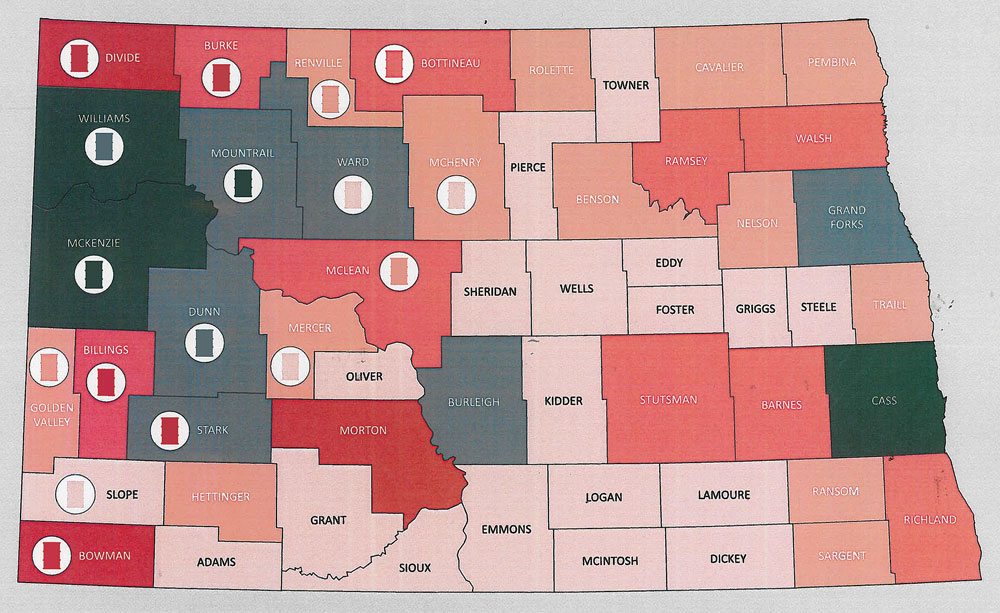Oil industry releases tax impact report
Ward County shows $590 million benefit

Submitted Graphic A map shows the revenue generated and distributed from oil and gas extraction and production taxes in North Dakota. Darker colors indicate larger amounts. Source: North Dakota Petroleum Council.
BISMARCK — Ward County has directly benefited from more than $590 million in state oil and gas taxes since 2008, according to county data released to state legislators by the North Dakota Petroleum Council and Western Dakota Energy Association Monday.
Legislators are in Bismarck for the reorganizational session.
The report showed $9.22 billion has been distributed to counties across the state from oil and gas production and extraction taxes in the past 15 years.
Over the past five years, extraction and production taxes have accounted for more than 51% of the taxes collected by the state, said Brent Bogar, communications practice leader with AE2S, which provided the data research.
“Since the start of the Bakken,” he added, “45 percent has just been the production and extraction tax. That does not include the taxes that the industry pays in sales taxes and income taxes.”
Benefits to counties have come through oil and gas distributions from a variety of channels, including allocations to education, water projects and property-tax reduction.
In Ward County, oil tax distributions since 2008 have totaled $92.9 million in property taxes, $170 million for water projects, $162.4 million toward education and $165 million in other spending categories.
The largest recipient county has been Williams, in the oil-producing northwest, with $1.29 billion in distributions. It is followed by oil-producing McKenzie County and the state’s most populous county, Cass, both with about $1 billion in distributions. Mountrail is fourth at $685.3 million, followed by Stark at more than $598 million and Ward at $590.5 million. About $542 million has gone to Grand Forks County and $354.58 million to Burleigh County.
Amounts received by area counties include Bottineau, $99.2 million; Burke, $134.79 million; Divide, $192 million; McHenry, $44 million; McLean, $96.68 million; Pierce, $20.56 million; Renville, $50.7 million; Rolette, $64.9 million; Sheridan, $9.17 million; and Wells, $19 million.
Oil-producing counties have a larger share of their distributions in the “other,” category, representing the large investment into infrastructure by the state to support Bakken activity.
Not shown in those distributions is the more than $3 billion spent through the state’s general fund in the past 15 years, Bogar said.
“That could be spread equally across all of the counties in North Dakota,” he said.
Ron Ness, president of the Petroleum Council, also addressed the industry’s opposition to trigger taxes. North Dakota law establishes an oil extraction tax rate of 5%, which increases to 6% if the average price of a barrel of crude oil exceeds the trigger price for three consecutive months. The original rate of 5% is reinstated if the average price of a barrel of crude oil is less than the trigger price for three consecutive months. The trigger price for 2022 has been $94.69 a barrel, which was exceeded for several months this year, amounting to about $120 million.
“We feel that is a wrong policy,” Ness said. “At a time when you’ve the question of how are we attracting financing and cap (capital) to the Bakken, a higher tax rate when times are good is not a way to have a policy.”



